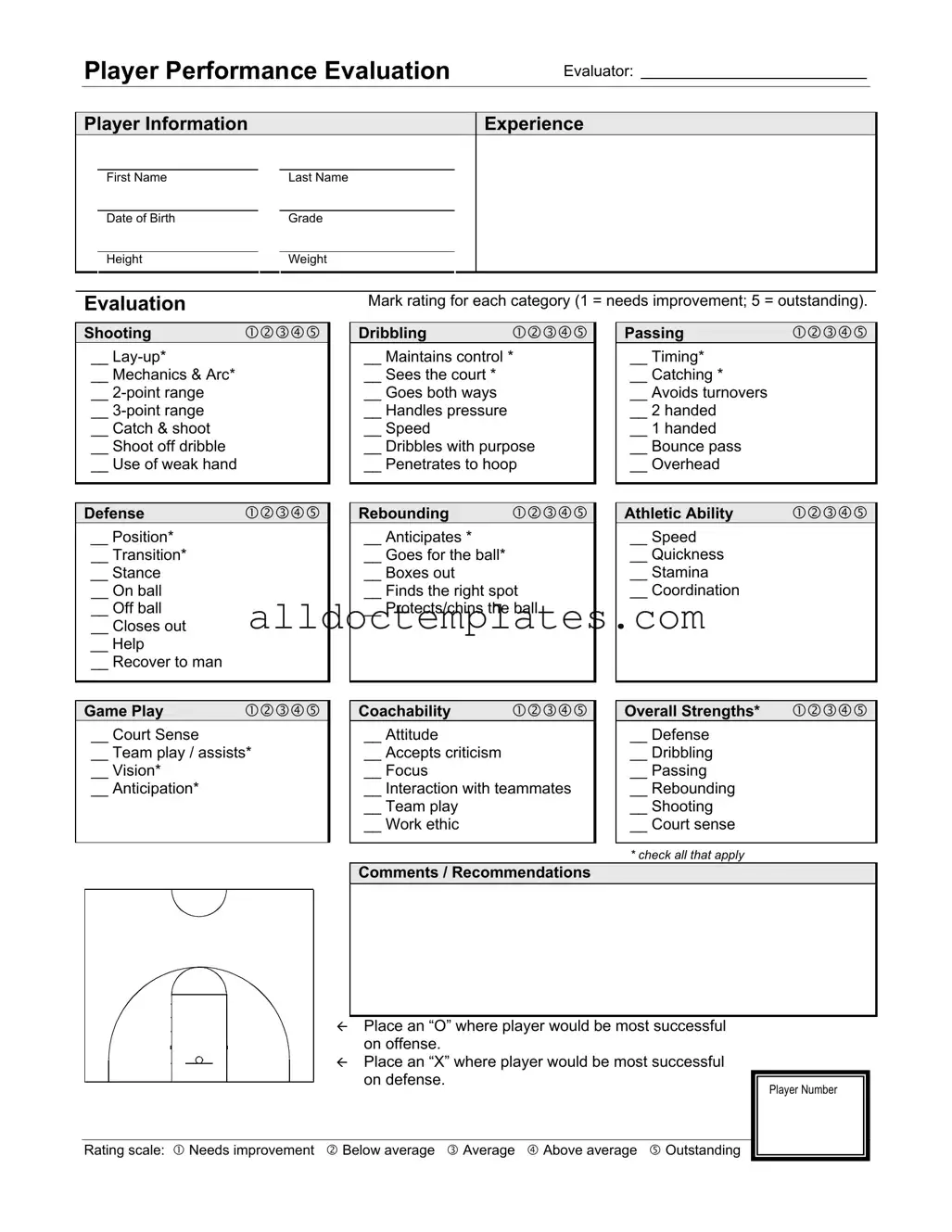Fill in a Valid Basketball Evaluation Form
The Basketball Evaluation Form serves as a comprehensive tool for assessing player performance across various skills and attributes. It allows evaluators to rate players on a scale from 1 to 5 in categories such as shooting, defense, dribbling, and overall athletic ability. By providing structured feedback, the form aids in identifying strengths and areas for improvement, ultimately enhancing player development.
Get Your Form Now

